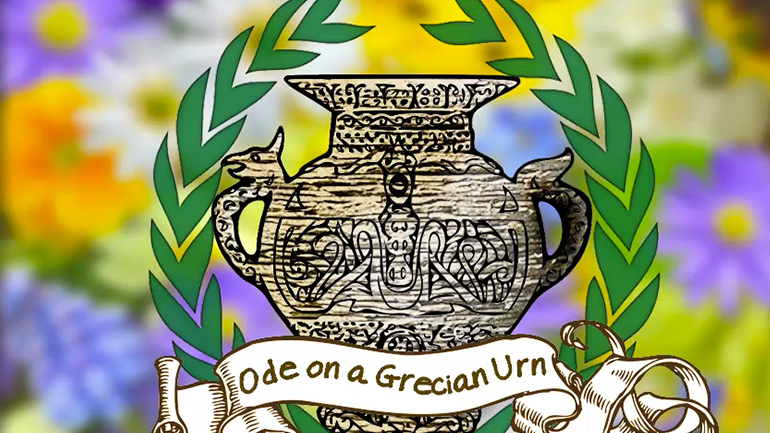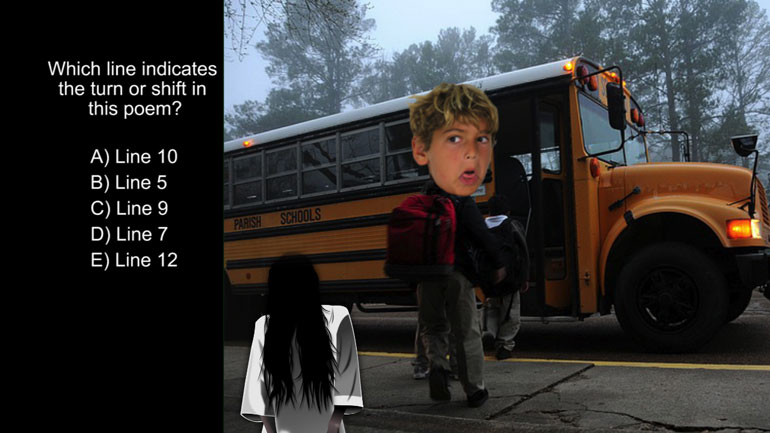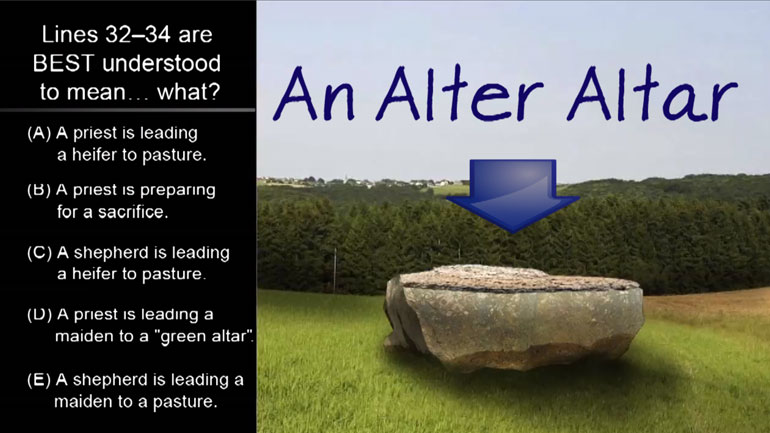ShmoopTube
Where Monty Python meets your 10th grade teacher.
Search Thousands of Shmoop Videos
AP English Literature and Composition 1.3 Passage Drill 4 254 Views
Share It!
Description:
AP English Literature and Composition 1.3 Passage Drill 4. What literary device is demonstrated in lines 8–10?
Transcript
- 00:02
Here’s your shmoop du jour, brought to you by Mysterious Priests.
- 00:06
There’s nothing like wearing a dark robe to make you look shady.
- 00:15
What literary device is demonstrated in lines 8–10? And here are the potential answers…
- 00:25
We’ve got another literary device question here…
- 00:28
It’s asking us what method the author decided to use in lines 8 through 10 in order to evoke
Full Transcript
- 00:33
some mental or emotional reaction from the reader.
- 00:36
Be careful… there may be a madness to his method…
- 00:39
Let’s look at lines 8 through 10:
- 00:42
What men or gods are these? What maidens loth? What mad pursuit? What struggle to escape?
- 00:49
What pipes and timbrels? What wild ecstasy?
- 00:52
Before we even begin to think about literary devices, one thing should leap out at us immediately,
- 00:57
like some creepy guy hiding in a bush.
- 01:00
Every sentence starts with the word “what.” What? Why?
- 01:04
Well, it just so happens that there’s a name for a rhetorical device where a word
- 01:08
or group of words is used to start a bunch of sentences in a row…
- 01:12
“Anaphora.”
- 01:13
Which is option C. And as long as we were familiar with the term… this question is a cinch.
- 01:18
But… let’s go ahead and see why we can rule out the other answer choices…
- 01:22
There’s no reference to famous people or historical events, so there’s definitely no allusion here…
- 01:27
An allegory is like a fable…
- 01:29
and it’s tough to communicate an entire fable or parable in just 3 lines of poetry.
- 01:34
Aesop tried and failed. He got horrendous grades in his poetry class…
- 01:39
Nothing is being referred to by the name of something associated with it… so metonymy is a “no”…
- 01:44
…and nothing is being compared in a symbolic way, so E is out as well.
- 01:48
So yeah – C, anaphora, is the best answer.
- 01:51
The best solution. The best choice. The best option.
- 01:55
We just anaphora’d you and you didn’t even notice.
Up Next
AP English Literature and Composition 1.2 Passage Drill 4. As which of the following is the object being personified?
Related Videos
AP English Literature and Composition 1.4 Passage Drill 3. How is Burne's view of pacifism best characterized in lines 57 through 67?
AP English Literature and Composition 1.6 Passage Drill 5. Death is primarily characterized as what?
AP English Literature and Composition 1.7 Passage Drill 5. Which line indicates the turn or shift in this poem?
AP English Literature and Composition 1.9 Passage Drill 4. Lines 32-34 are best understood to mean what?




